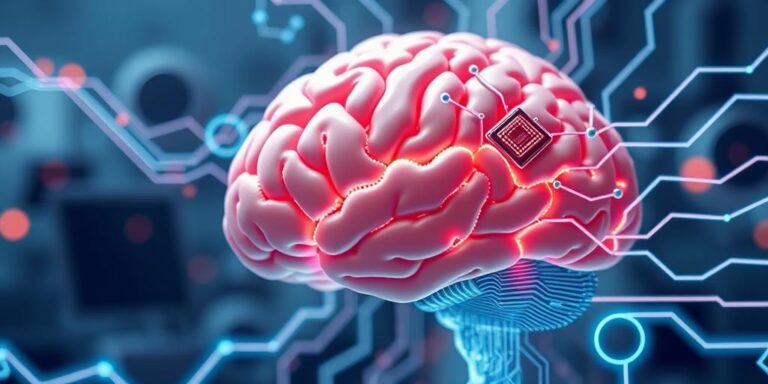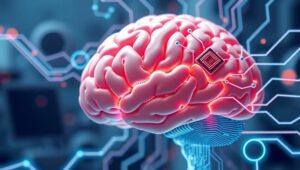Neuromorphic Computing: Brain-Inspired Chips Taking Off (2025-2030)
Neuromorphic computing, a revolutionary approach to computer engineering, draws inspiration from the human brain’s architecture to create more efficient and powerful processing systems. Unlike traditional computers that rely on binary code and sequential processing, neuromorphic chips mimic the brain’s neural networks, utilizing interconnected nodes (neurons) that communicate through electrical signals (spikes). This paradigm shift promises to overcome the limitations of conventional computing, particularly in areas like AI, machine learning, and real-time data processing.
The Core Principles of Neuromorphic Computing
At the heart of neuromorphic computing lies the concept of mimicking the brain’s structure and function. Key elements include:
- Spiking Neural Networks (SNNs): Instead of transmitting continuous values, SNNs use discrete spikes to represent information, similar to how neurons communicate in the brain. This approach enables energy-efficient computation.
- Synaptic Plasticity: Neuromorphic systems emulate the brain’s ability to learn and adapt by adjusting the strength of connections (synapses) between neurons. This allows the system to learn from data in a more natural and efficient way.
- Parallel Processing: Like the brain, neuromorphic chips perform computations in parallel, with many neurons operating simultaneously. This massively parallel architecture enables faster processing speeds and improved scalability.
Advantages of Neuromorphic Computing
The brain-inspired design of neuromorphic chips offers several key advantages:
- Energy Efficiency: Neuromorphic systems consume significantly less power than traditional computers, making them ideal for applications with limited energy resources, such as mobile devices and embedded systems.
- Real-Time Processing: The parallel architecture and event-driven nature of neuromorphic chips enable real-time processing of complex data streams, critical for applications like autonomous vehicles and robotics.
- AI and Machine Learning Acceleration: Neuromorphic computing can accelerate AI and machine learning tasks by providing a more efficient platform for training and deploying neural networks.
- Fault Tolerance: The distributed nature of neuromorphic systems makes them more resilient to errors and hardware failures.
Key Players and Current Developments
Several companies and research institutions are actively developing neuromorphic computing technologies. Some notable players include:
- Intel: Intel’s Loihi chip is a prominent example of a neuromorphic processor, designed for AI and machine learning applications. Intel continues to advance its neuromorphic research and development efforts.
- IBM: IBM’s TrueNorth chip was one of the early pioneers in neuromorphic computing, demonstrating the potential of brain-inspired architectures.
- iniLabs: iniLabs specializes in silicon retina and cochlea sensors that mimic the human eye and ear, enabling low-latency, high-dynamic-range sensing for robotics and other applications.
- BrainChip: BrainChip’s Akida neuromorphic processor is designed for edge AI applications, offering low-power, high-performance processing for tasks like object detection and anomaly detection.
Applications of Neuromorphic Computing
The unique capabilities of neuromorphic computing open up a wide range of applications across various industries:
- Autonomous Vehicles: Neuromorphic chips can process sensor data in real-time, enabling faster and more accurate decision-making for self-driving cars.
- Robotics: Neuromorphic systems can enhance the perception and control capabilities of robots, allowing them to interact with the environment more naturally.
- Healthcare: Neuromorphic computing can be used for medical image analysis, drug discovery, and personalized medicine.
- Cybersecurity: Neuromorphic chips can detect anomalies and patterns in network traffic, improving cybersecurity defenses.
- Aerospace and Defense: Neuromorphic systems can process sensor data from satellites and drones, enabling real-time intelligence and surveillance.
Challenges and Future Outlook
Despite its potential, neuromorphic computing faces several challenges:
- Software and Algorithms: Developing software and algorithms that can fully leverage the capabilities of neuromorphic hardware is a significant challenge.
- Hardware Design: Designing and manufacturing neuromorphic chips with high density and low power consumption requires advanced fabrication techniques.
- Scalability: Scaling neuromorphic systems to handle large and complex problems remains an ongoing research area.
Looking ahead, the future of neuromorphic computing is bright. As research and development efforts continue to advance, neuromorphic chips are expected to become more powerful, efficient, and accessible. By 2025-2030, we can anticipate wider adoption of neuromorphic computing in various applications, transforming industries and enabling new possibilities in AI and beyond.
In conclusion, neuromorphic computing represents a paradigm shift in computer engineering, offering a brain-inspired approach to overcome the limitations of traditional computing. With its potential for energy efficiency, real-time processing, and AI acceleration, neuromorphic computing is poised to revolutionize various industries and shape the future of technology.




